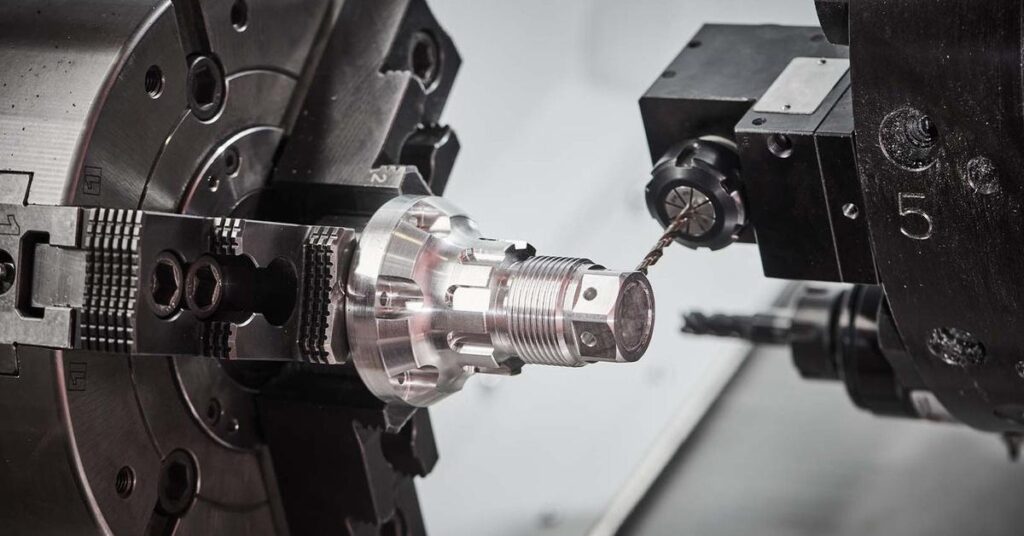CNC machining is the trusted craftsman of the digital age in prototype development, providing both the precision and efficiency of a master artisan. The tactile feel of materials meets the boundless possibilities of digital design, transforming visions into tangible realities. The process isn’t just about removing material. It’s about bringing ideas to life, one meticulous cut at a time.
The path from concept to prototype is filled with challenges and discoveries for engineers and designers. Its blend of speed and accuracy makes CNC machining a steadfast companion on this path. Rather than merely a method, it’s a means to an end – turning abstract concepts into tangible prototypes. As a result of this technology, not only are materials being transformed, but the way we think about design, iteration, and innovation is also being transformed.
CNC machining is more than just machines and materials when it comes to prototype development. We’re exploring the relationship between creativity and technology, where every detail matters. The purpose of this introduction is to invite you to learn about CNC machining, one layer at a time and relentlessly striving for perfection.
CNC Machining: Precision, Speed, and Versatility
In prototype development, CNC machining provides an unmatched level of precision, guaranteeing prototypes accurately follow their digital designs. The need for precise specifications is particularly important in fields such as aerospace and medical devices, where safety and functionality are critical. CNC machining’s ability to reproduce every detail of a CAD model into a physical prototype highlights its importance in modern engineering.
CNC machining speeds up the development process from concept to prototype. CNC machines reduce production time by automating and operating around the clock, allowing faster iterations and refinements. A rapid prototyping and testing process can significantly shorten the product development cycle in today’s fast-paced market, which is essential for staying competitive.
A CNC machine’s versatility in material compatibility further distinguishes it from other machining methods. CNC machining is capable of working with many materials, from metals to plastics and composites. This facilitates the exploration of different material properties during prototyping. Due to this adaptability, engineers can experiment with and select the best materials for their projects, so that the final product meets the desired specifications for strength, weight, and aesthetics.
Further, CNC machining’s ability to produce complex geometries that are often difficult or impossible to achieve with traditional manufacturing techniques empowers designers to innovate. Due to its ability to handle intricate designs and tight tolerances, the technology enables the creation of prototypes that truly reflect next-generation engineering solutions.
CNC Machining Impact on Product Development
CNC machining has a transformative effect on product development far beyond the creation of prototypes. The ability to quickly move from concept to market-ready product is invaluable in the highly competitive landscape of modern industry. With CNC technology, businesses can iterate and refine their designs with unprecedented speed and precision. It is not just a time-saver. It is a strategic advantage that allows companies to stay ahead of the curve, adapting to market changes and consumer demands.
With CNC machining, digital models can be converted directly into physical prototypes that can be evaluated and tested. As a result of this immediate feedback loop, design flaws can be identified at an early stage, significantly reducing the risk of costly errors and rework during later stages of development. Engineers and product developers can explore a broader array of solutions using CNC machining by facilitating an iterative approach to design. As a result, the final product often exceeds the initial performance and quality expectations.
Furthermore, CNC-machined prototypes provide invaluable insights. Materials, design adjustments, and manufacturing strategies can be informed by them. Real-world data guides the product development process, enhancing the likelihood of success in the marketplace. These insights can be used by engineers to introduce innovative features and improvements, ensuring the final product resonates with consumers and stands out.
Affordability and Efficiency: Economic Advantages of CNC Machining
Considering the overall efficiency and cost-effectiveness it brings to manufacturing operations, CNC machining has profound economic advantages in prototype development and beyond. The initial investment in CNC machinery and setup may seem steep, but the benefits of these advanced systems quickly outweigh the cost. A significant benefit is the dramatic reduction in labor costs. Using CNC machining, skilled workers can allocate their expertise to more critical, value-added tasks, rather than manual labor. Additionally, it enhances productivity and innovation within the manufacturing pipeline by optimizing the workforce.
Furthermore, CNC machining processes reduce material waste by a significant amount. CNC machines ensure that material removal is minimized and highly accurate by following digital designs meticulously, resulting in prototypes and parts that closely adhere to specified tolerances. Precision is particularly important in applications such as the preparation of tensile specimens, where the dimensions and finish of the specimen have a significant impact on the validity of mechanical property testing. By producing these specimens with exacting accuracy, advanced CNC machines can provide reliable test results and, by extension, product quality and performance.
The need to source CNC machines from reliable companies also highlights the cost-effectiveness of CNC machining. As well as guaranteeing quality and reliability, a trusted supplier also provides service and support, ensuring that CNC equipment is operating at peak efficiency with minimal downtime. For companies to continuously innovate and produce with confidence, this partnership is crucial for maximizing the long-term benefits of CNC machining.
